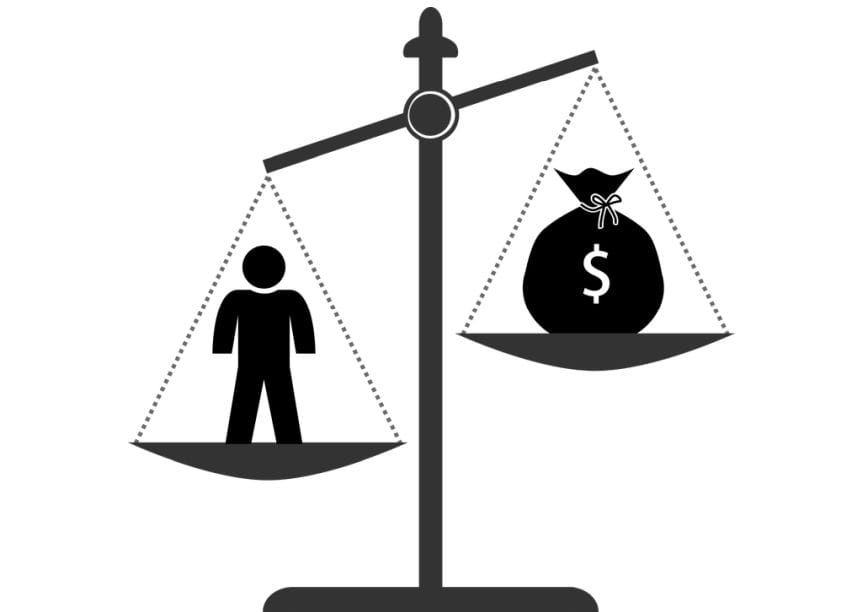
Can We Thrive Without Overheating the Planet? Lessons from Costa Rica and Uruguay
This article asks: is it possible to secure high levels of wellbeing while keeping emission levels within a fair and sustainable limit? It takes a global perspective, identifying countries that effectively support their citizen's wellbeing using significantly few resources.
Climate change presents an unprecedented global threat to human wellbeing. Yet, when it comes to funding the very systems that protect and improve wellbeing, many European governments across the political spectrum seem stuck on a single strategy: pursuing economic growth.
The problem? Global GDP growth and climate change continue to be tightly linked. While there is evidence of some countries achieving absolute decoupling of GDP growth from CO2 emissions (i.e. growing GDP with decreasing or stable CO2 emissions), these trends are reversible and are happening too slowly to avert the most severe consequences of global warming.
This article asks: is it possible to secure high levels of wellbeing while keeping emission levels within a fair and sustainable limit? It takes a global perspective in trying to identify countries that effectively and sustainably support their citizen's wellbeing, helping to uncover pathways to a more sustainable and resilient future.
Defining wellbeing
Wellbeing has many definitions. This article focuses on ‘eudaimonic’ wellbeing – the idea that wellbeing is defined by the presence of conditions that allow people to thrive or ‘flourish’, rather than purely subjective feelings of pleasure. Doyal and Gough’s Theory of Human Need breaks these conditions down into eleven intermediate needs that relate to autonomy, health, and personal development (9 of which could be translated into measurable indicators for this article, see Table 1). Countries’ wellbeing levels will be assessed on the extent to which these basic needs are met.
Table 1: Basic needs (Doyal and Gough, 1991)
Fair AND sustainable wellbeing
Sustainable wellbeing will be defined as meeting all of the above needs at fair and sustainable CO2 emission levels.[1] The planetary limit for greenhouse gas emissions has been set at an atmospheric CO2 concentration of 350ppm. Exceeding this limit would dangerously threaten the physical, chemical, and biological processes that collectively regulate the planet's stability and resilience, and thus humanity’s ability to thrive and survive. This leaves humanity with a limited carbon budget - the amount we can still emit before crossing dangerous climate tipping points. Addressing the question of how the remaining global carbon budget should be allocated, Williges et al. (2022) have developed ‘fair’ national budgets, which consider that:
- An equal per-person distribution would prevent historically low-emitting countries from securing the wellbeing of their people;
- Early-industrialised countries have been aware of the harm of their emissions since 1995 at the latest while continuing to benefit from emissions, they carry greater responsibility;
- A fair carbon budget for high-emitting countries must be adjusted for ambitious yet feasible annual CO2 reduction rates.
By subtracting countries’ consumption-based carbon emissions per person from their remaining yearly ‘fair’ carbon budget, their carbon deficit for the year 2017 was calculated. Negative values indicate that countries are using less carbon than their fair share, while positive values represent excess emissions.
A look at the data
Plotting the number of needs met against the carbon budgets of 82 countries[2] highlights the difficulty involved in satisfying human needs sustainably and fairly. Only 18 countries satisfy all 10 basic need indicator thresholds (notably, this even excludes the U.S., which fall short on the physical security need), and no country in the world is able to sufficiently meet its people’s needs while remaining within its fair carbon budget. Instead, satisfying all basic need thresholds comes at the cost of exceeding carbon budgets by at least 6 tonnes per person per year. This excess alone represents more than three times the average yearly consumption emissions of a person in India.
Figure 1: Needs thresholds met by emission deficit

Uruguay and Costa Rica come closest to meeting all need thresholds while staying within their fair carbon budget. Although they fall slightly short of the education and social support thresholds (and environmental health in Costa Rica’s case), they come very close. Their success is even clearer when looking at countries’ relative performance [3] (Figure 2 below), where each country is scored in reference to the best and worst performing countries in each needs dimension. Using this index, Uruguay provides better wellbeing outcomes at lower emission levels than countries such as South Korea, Poland and Israel, while Costa Rica is not far behind, performing better than countries such as Latvia and Hungary. In addition, both Uruguay and Costa Rica are designated as having ‘very high’ human development, and the life expectancy in Costa Rica exceeds that of the United States.
Figure 2: Needs performance by emission deficit

Figure 3 below shows that both countries have achieved this level of wellbeing at roughly half of the UK's consumption level (adjusted for purchasing power parity, PPP). This shows that high levels of wellbeing do not require the high levels of consumption currently taking place in the Global North.
Figure 3: PPP Household Consumption per capita (current $)

Lessons from Uruguay and Costa Rica
Uruguay’s and Costa Rica’s relative successes in securing sustainable wellbeing are rooted in the countries’ approaches to energy generation and social policy.
Energy
In terms of energy generation, both Uruguay and Costa Rica are anomalies, generating almost 100% of their domestic electricity from renewable sources. Relatively low population densities, limited heavy industry, and modest overall electricity demand — shaped by largely service-based and moderately industrialised economies — have made it structurally easier to transition to clean electricity. Both countries also benefit from their water-rich geography, sharing a long tradition in hydroelectric power generation that has made up considerable proportions of their energy mix for decades.
However, in Uruguay, severe droughts between 1999 and 2008 led to an increased reliance on fossil fuel imports to secure the energy supply, resulting in nearly 55% of Uruguay’s total energy supply being made up of oil in 2005. The country responded decisively with the National Energy Policy 2005-2030. The policy focused on increasing renewable energy generation and diversifying Uruguay’s energy mix, particularly by expanding wind power capacity. The transition occurred at a rapid pace, with Uruguay reaching a peak of 5.48 TWh of wind power generated in 2020, having had virtually no wind power generation capacity a decade prior.[4]
In addition to favourable geographic conditions, Uruguay’s transition also benefitted from state control over the electricity grid. The government-owned power company offered commitments to private businesses to purchase electricity from renewables at a set rate. The secure and consistent revenue encouraged private investment in renewables while keeping the state in control of electricity distribution. As both Uruguay’s and Costa Rica’s energy demands increased, they have continued to diversify their renewable energy generation, incorporating wind and geothermal energy.
Social policy
The focus on renewable energy has been flanked by strong social policies that have supported major leaps in wellbeing.
Since abolishing its military in 1949, Costa Rica has been able to benefit from its peace dividend. The radical move allowed the country to invest more into education, health and the environment. Key policies include universal access to healthcare, irrespective of economic background, and a focus on education. Costa Rica’s healthcare system has proven to be stable and well-functioning, providing near-universal access to the full range of services, including the most complex. The foundation of Costa Rica’s commended health outcomes is the well-established primary healthcare system, which was considered “a model of interest for other health systems at all stages of development” by the OECD.
Strong educational records can be traced back to an early commitment to compulsory primary education (introduced in 1887) and upper secondary education (introduced in 2011). Costa Rica has consistently invested 6% or more of its GDP into education, more than the regional average, supporting an extensive public education system.
Uruguay experienced a shift in social policy with the first-ever election of a left-wing government in 2004. The years that followed saw a rapid decline in extreme poverty, with rates even falling below those of the UK in 2016, aided by targeted cash transfers and rising employment and labour incomes. This was underpinned by substantial increases in public social spending, increasing from 18.5% of GDP in 2005 to 25.2% in 2017 (higher than most countries in the region and many OECD nations, including the UK). The government extended social protection to vulnerable and poor populations and further enhanced social protection coverage through exemplary education about social security. In 2010, additional efforts were made to broaden the scope of health care, unemployment insurance, and non-contributory pension benefits.
Conclusion
The data presented in this article highlights the scale of the challenge that is securing sustainable wellbeing, even when focusing on just one dimension of environmental sustainability.
The successes of Uruguay and Costa Rica are, in part, helped by unusual geographical and historical preconditions that are difficult to replicate. However, the findings also offer some hope and direction: flourishing societies can be achieved with far lower consumption and emission levels.
For countries like the UK, returning to fair and sustainable emission levels would require a drastic transformation.
Costa Rica and Uruguay provide pointers on how we might get there. They affirm the vital importance of decarbonising energy and society for coming close to sustainable wellbeing. The rapid expansion of wind energy in Uruguay proves that renewables can be adopted at pace if the political will and the right institutional conditions exist. While the UK may not have the same geographical advantages as Uruguay or Costa Rica, a recent study suggests that England has the potential to meet more than twice its energy demand from onshore renewable energy - showing that much more can be done.
At the same time, Costa Rica’s and Uruguay’s significantly lower consumption levels demonstrate that reducing energy demand is not only possible, but essential - particularly given research highlighting the critical role of energy demand reduction in avoiding dangerous climate change. In addition, strengthening universal public services brings both social and ecological benefits, as public bodies have greater scope for pursuing equitable and sustainable practices.
Finally, a culture that values social connection, nature and health and celebrates gratitude and simplicity - like Costa Rica's famous ‘Pura Vida’ ethos – can catalyse the adoption of sustainable practices and bring us closer to a future where people and planet can thrive in harmony.
[1] Note: that this is just one dimension of environmental sustainability, chosen due to climate changes magnifying effect on other environmental crises
[2] All countries for which data was available for the year 2017
[3] Countries are scored on a scale from 0 to 1 for each basic need, where 1 is the best performance and 0 is the worst. All other countries are ranked based on this scale.
[4] For context, this represents a wind power capacity of 1.6 MWh per capita, roughly 0.4 MWh higher than what has been achieved by the UK. https://lowcarbonpower.org/ranking


